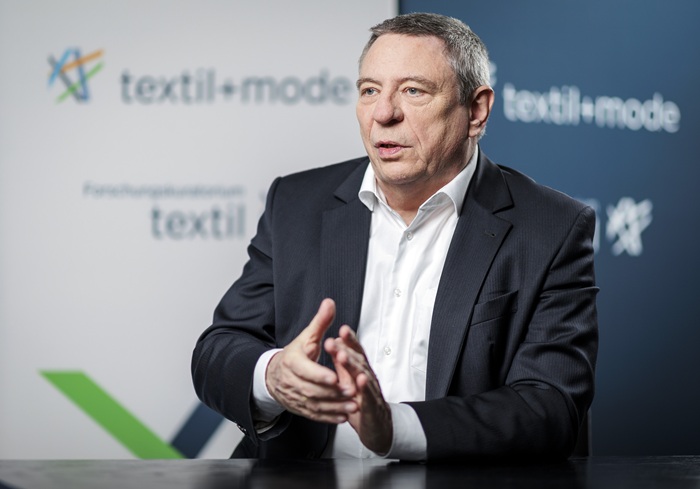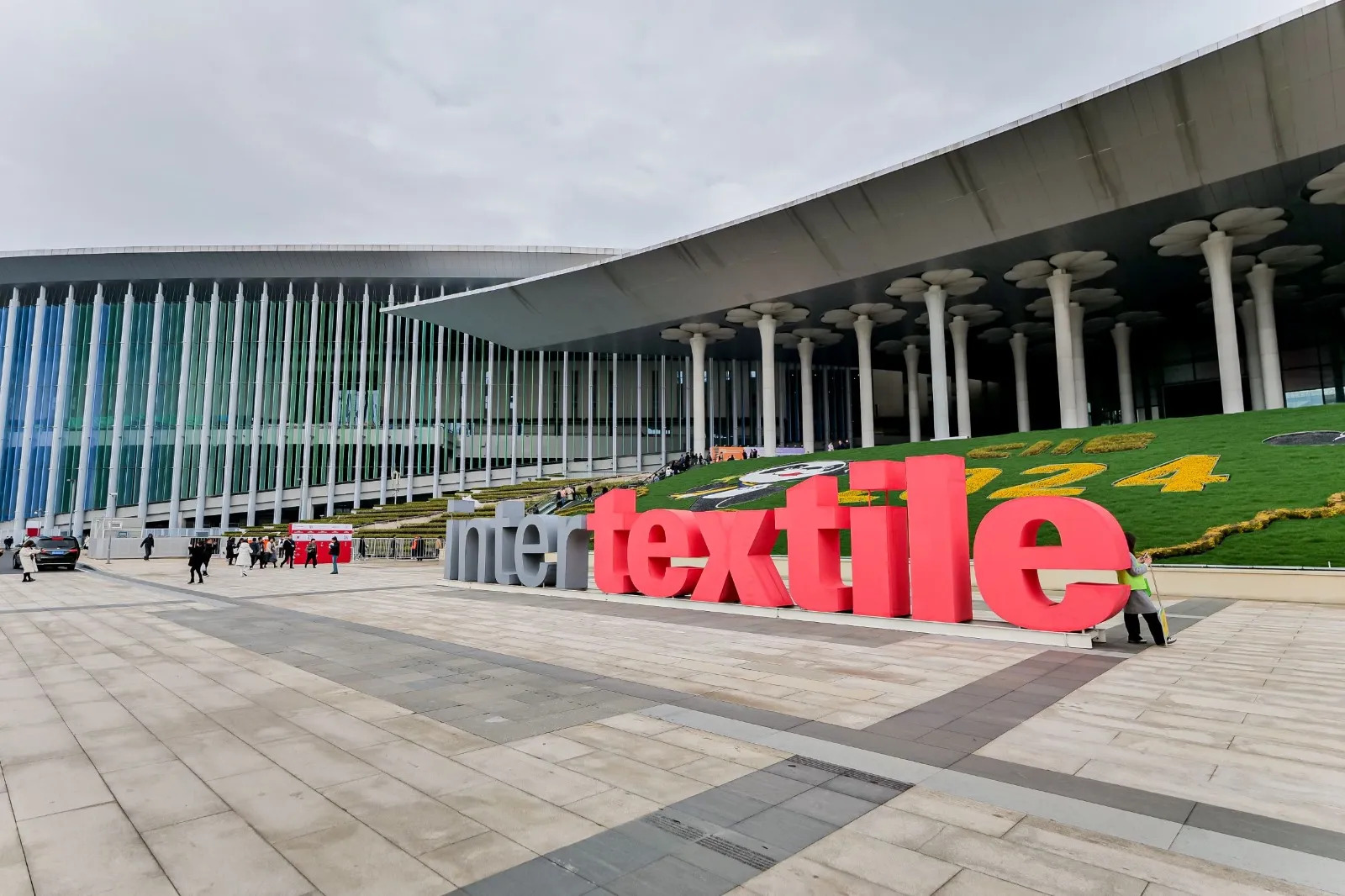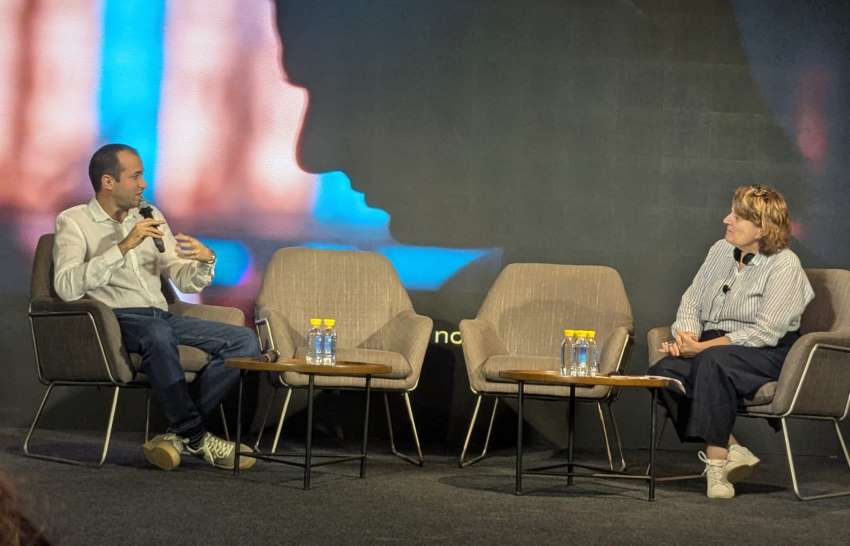FW
"As Steve Howard, Chief Sustainability Officer for Ikea, cotton was contributing most negatively to the company’s overall carbon footprint. However, years of efforts to implement grassroots advocacy and educating its primary cotton farmers to embrace the Better Cotton Standard are now showing results with some witnessing reductions in water and fertilizer usage of up to 50 per cent, while yields for many have increased by 5 per cent to 15 per cent."

The motive behind Better Cotton Initiative’s (BCI) is to make global cotton production better for the people who produce it, for the environment it grows in and for the sector’s future. Many leading brands such as Ikea, Adidas, Gap and H&M joined the initiative to support sustainable growing practices that rely on less water, fertilisers and pesticides, among other things. However, Ikea was the only brand that succeeded in its commitment to sourcing 100 per cent of its cotton from BCI sources by 2015.
Ikea implements its promise to source ‘Better Cotton’

Ikea requires 0.7 per cent of the world’s cotton supply for its sofa, upholstery and towels and all the cotton sourced by this Scandinavian company now comes from famers working in collaboration with the Better Cotton Initiative.
As Steve Howard, Chief Sustainability Officer for Ikea, cotton was contributing most negatively to the company’s overall carbon footprint. However, years of efforts to implement grassroots advocacy and educating its primary cotton farmers to embrace the Better Cotton Standard are now showing results with some witnessing reductions in water and fertilizer usage of up to 50 per cent, while yields for many have increased by 5 per cent to 15 per cent.
Ikea, in its efforts to reduce carbon footprint, started working closely with its supply-chain partners to reach individual farmers and switched cotton procurement to sustainable cotton sources, which created a market for sustainable growers. Howard said that the response was most positive in South Asia. The world’s largest home furnishing company sources most of its cotton from India, Pakistan, Turkey, China, Brazil and the United States. About 5 per cent of the supply comes from US sources, according to Ikea.
Efforts continue to further the Better Cotton cause
While the company has succeeded in achieving its initial goal, it will continue to take initiatives to increase the sustainable cotton production. In its aim to save water, the company supports drip irrigation techniques since they help in bringing down the amount of water sprayed onto soil where no crops are planted. According to Howard, Ikea is also long at diversifying the fibers it uses for textiles, both through recycling of previously used material and by increasing the ways in which it uses hemp and flax.
According to BCI, more than 25 million tons of cotton is produced annually. As of last year, about 7.6 per cent of that amount was produced using farming methods that met the Better Cotton Standard. As of 2014, more than 1.2 million small farming operations have embraced the initiative in 20 countries, which was ahead of schedule. By 2020, the target is 30 per cent of global production and five million farmers.
Among the leading apparel players committed to Better Cotton Initiative, Adidas Group aims to achieve its 100 per cent Better Cotton goal by 2018. In 2014, the company sourced about 30 per cent of its cotton fibre through BCI sources. H&M expects to reach its 100 per cent commitment by 2020 and as of 2014, 21.2 per cent of the cotton in products sold by the Swedish clothing retailer were organic, recycled or grown via BCI production methods.
Levi Strauss & Co is looking forward to achieving 75 per cent by 2020; as of April, the denim giant had reached 6 per cent. Whereas Marks & Spencer with a goal to reach 70 per cent Better Cotton by 2020; has said that one-third of its cotton comes from BCI, organic, recycle or Fair Trade sources. While Nike’s target was to source 100 per cent Better Cotton by 2020; as of a 2014 update, the company said it may take longer than expected to transition its cotton sources.
Bettercotton.org www.ikea.com
The Government of India has decided to set up an Integrated Textile Office Complex (ITOC) at Indian Institute of Handloom Technology (IIHT), Varanasi. The proposed office complex will house all offices in Varanasi under the Ministry of Textiles, which work for the welfare of weavers. The Union Textiles Minister Santosh Kumar Gangwar recently laid the foundation stone for the integrated complex at IIHT.
Co-location of offices of various allied agencies under Ministry of Textiles in the proposed building will provide a common platform to all stakeholders, including weavers, exporters and marketing agencies. This will enable them to better reap the benefits of Government schemes and with less effort, resulting in saving of time and money. This will thereby contribute to higher productivity, income and better livelihoods for weavers.
In addition, situating ITOC in the IIHT campus will facilitate obtaining of necessary approval for starting the Degree course B. Tech in Handloom & Textile Technology at IIHT Varanasi campus on the lines of the course in IIHT Salem. This in itself will fulfill the long-felt need for such a course in this part of the country. Furthermore, bringing a NIFT extension counter in the IIHT campus will not only catalyze the students learning process, but will also bring in better synergy between their academic projects and the design related activities of Weavers Service Centre, resulting in value-addition to the weavers products.
The proposed Integrated Textile Office Complex (ITOC) is expected to be ready within two years. The construction will be undertaken by CPWD, at an estimated cost of Rs 64 crores.
Global ministers during the recent annual World Trade Organisation (WTO) meeting agreed a deal calling for cotton from least developed countries to be given duty-free and quota-free access to the markets of developed countries from January 2016 onward.
The meeting held in Nairobi stresses the vital importance of the cotton sector to least developed countries (LDCs). The decision includes three agriculture elements: market access; domestic support; and export competition. On market access, the decision has appealed for cotton from LDCs to be given duty-free and quota-free access to the markets of developed countries – and to those of developing countries declaring that they are able to do so – from January 1, 2016.
The agreement provides 2016 as the first date from which the poor countries, which include 35 LDCs and the cotton four countries in Africa – Burkina Faso, Benin, Chad and Mali – and other developing countries, can begin to export cotton duty-free. The Nairobi package also contains decisions of specific benefit to LDCs, including enhanced preferential rules of origin for LDCs and preferential treatment for LDC services providers. This builds on the 2013 Bali ministerial decision on preferential rules of origin for LDCs, which set out, for the first time, a set of multilaterally agreed guidelines to help make it easier for the country's exports to qualify for preferential market access.
Key beneficiaries of the agreement will be sub-Saharan African countries, which make up the majority of the LDC group, the proponent for the agreement on preferential rules of origin for LDCs.
www.wto.org
Total exports of textiles and garments from Vietnam to the US increased 11.7 per cent to $9.88 billion from January to November 2015. According to the Vietnam Textile and Apparel Association (Vitas), during the 11 months, the export value to other major export markets of Vietnam's textile and garment was also optimistic with $3.09 billion to the EU, $2.53 billion to Japan and $1.98 billion to South Korea.
Once the TPP agreement comes into effect, Vietnam's textile and garment exports to the US are expected to further gain considerably. According to Luong Hoang Thai, head of the Ministry of Industry and Trade's Multilateral Trade Policy Department and the Deputy Head of Vietnam's negotiator delegation at the TPP deal, the tax value that Vietnamese textile, garment, leather and footwear exporters currently have to pay for the US, is higher than that of other TPP member countries. The local enterprises must pay a total tax value of $1.17 billion for exporting textile and garment products to the US market and of $300 million for exporting footwear products.
Therefore, Vietnam was successful in negotiating with the US to reduce the tariff for Vietnamese textile, garment and footwear products from an average rate at 17 per cent to zero under commitments of the TPP, Thai said. To join the zero tariffs, the local exporters will have to meet origin regulations from material for production under TPP agreement to prevent neighbouring countries from exporting their products to Vietnam and then shipping to other countries.
The Vietnam National Textile and Garment Group (Vinatex), Vietnam's largest textile and garment producer, was estimated to achieve a year-on-year export value of 10 per cent to $3.4 billion for this whole year. However, the group's pre-tax profit was predicted to reach VND1.35 trillion ($60 million) for this year, similar to the rate in 2014, because depreciation of currencies in some other textile and garment exporting countries such as China, India and Indonesia.
This year, the group's exports to major markets was expected to gain, including a growth rate at 12.95 per cent to the US, 5.96 per cent to the EU, 7.95 per cent to Japan and 8.77 per cent to South Korea against 2014.
www.vinatex.com
The Synthetic & Rayon Textiles Export Promotion Council (SRTEPC) is organising participation of its member companies in Colombo International Yarn & Fabric Show (CIFS) to be held from March 10 to 12, 2016.
Sri Lanka is currently sourcing over $1.60 billion of MMF of synthetic and blended textiles from the global markets. India exported $201.82 million of synthetic and blended textiles to this market during 2014 with a market share of 12.30 per cent only. Considering this, the council feels that there is substantial scope for Indian players to further enhance their trade of MMF textiles with Sri Lanka. Keeping the prospects of this market in sight, SRTEPC has urged its members to participate in the fair to improve their trade relations.
The main products of MMF textiles that are exported to Sri Lanka includes suiting, shirting, PV woven fabrics, woven fabrics of polyester staple fibre, knitted fabrics of elastomeric yarn and synthetic fibres dyed, narrow woven fabrics, among many other varieties. In Yarn category, India exports nylon tyre cord yarn, polyester textured yarn (PTY), nylon textured yarn, and in fibre category viscose staple fibre (VSF) to Sri Lanka.
www.yarnandfabric.org
www.srtepc.in
The Australian Wool Production Forecasting Committee (AWPFC) has revised its forecast of shorn wool production for the 2015/16 season to 322 million kilograms greasy, a 7 per cent decline on the estimate of 346 million kg for the 2014/15 season.
According to the Committee Chairman, Russell Pattinson, “seasonal conditions in a number of the major sheep producing regions in Australia have been drier than expected over spring which has resulted in lower fleece weights and, more recently, reports of increased sheep turn-off. Victoria, Tasmania, the south-east and north-west of South Australia, and the Great Southern region in Western Australia have all experienced difficult seasons. Among other things this has caused problems with stock water availability. Also, the major sheep regions of Queensland continue to see very tough conditions and the sell-off of sheep continues in that state. Even in New South Wales, there are areas where seasonal conditions have been more difficult than expected.”
The AWPFC’s final estimate of shorn wool production for the 2014/15 season is 346 million kg, an increase of 1.7 per cent over the previous season. As noted in August, this increase is in line with, but less than, the increase seen in AWTA tests, ABS wool receivals and AWEX auction offerings for 2014/15. Some of the increase in wool tests, receivals and auction offerings late in the 2014/15 season was attributed to the release of on-farm stocks held over from previous seasons as well as the forward offering of wool held in brokers’ stores and earlier than usual deliveries of recently shorn wool in response to the spike in wool prices in May and June. It is expected that, as these stocks will not be available in 2015/16, the AWTA test data and ABS receivals data in 2015/16 will fall by more than the decline in production.
The Committee noted that for the 2015/16 season to November, the AWTA test data showed a reduction in volumes of wool between 20.6 and 24.5 microns, with smaller declines for finer Merino wool and for Crossbred wool. This resulted in a 0.1 micron decline in the mean fibre diameter for Australia to November.
www.wool.com
Recent approval of the ‘Trade Facilitation and Trade Enforcement Bill’ by the US Senate on December 9, 2015 opened duty-free-quota-free access of Nepali readymade garments, pashmina, and leather products into the US. The latest Bill, once gets the US President’s seal to transform it into an Act, is anticipated to boost trade prospects of the RMG industry of Nepal.
According to Chandi Prasad Aryal, Acting President of Garment Association Nepal, sighting the ensued opportunity the RMG industry must now focus on improving the industrial and investment climate to attract investment. Over 80 per cent of garment factories were forced to shut down after the quota system was abolished, which can now be revived. Momento Apparels and Cotton Comforts, for instance, once Nepal’s largest garment exporters, are looking at making a comeback.
Apart from political stability, the country also needs to tackle issues like load-shedding, well-managed transportation costs and labour unrest to ensure healthy business climate, which can attract investments in the garment sector. The duty free facility is also expected tp make the industry capable of competing with its rivals in Asia like Bangladesh and Cambodia.
Also to avoid situation like post-quota phase, Aryal is of the opinion that the country needs to create sustainable relations with trade partners by delivering orders on time at competitive rates and create strong raw material base, while the government should approach investors from developed countries and announce an incentive package for the development of the RMG sector.
Ganasso.org.np
Coimbatore textile mills have taken steps toward energy conservation. Be it spinning mills or humidification plants, machinery comes with energy saving upgrades. Foundries and engineering units have started looking at ways to improve power supply, bring down energy bill, and save on power consumed.
Mills have a scope for seven to 11 percent energy saving in a year if they take the right steps. Since energy conservation requires investment, it’s necessary for mills to prioritise areas that need to be addressed. In the case of power looms, one option for bringing down the power consumed is by going in for solar panels. However, the investments are high and hence the units have sought subsidy from the central and state governments.
Micro units do job work for larger industries but their earnings are less. So they are unable to invest in energy saving tools. They focus more on day to day operations and not many have the resources to take up energy conservation. This is an area that needs attention.
Foundries and pump set units are reluctant to invest in energy conservation because of current market conditions. Making energy efficient pumpsets mandatory will bring more manufacturers into this sector.
Seasoned industry retail leader Carrie Ask is joining Levi Strauss as executive vice president and president of global retail. Ask will be responsible for leading all aspects of Levi’s global retail business, including 2,700 owned and operated stores, franchise stores and outlet stores.
Carrie Ask has a successful track record of driving retail strategy and execution at leading brands. She has held leadership positions at Nike subsidiary Converse, where she was VP and general manager with global oversight for full price stores and factory stores. Previously she held retail and merchandising positions at Petco, Target Corporation and BC Natural Foods. She has been vice president and general manager at Nike.
Ask served in the US navy and received a bachelor of science in ocean engineering from the US Naval Academy. She is a graduate of the Kellogg Graduate School of Management at Northwestern University where she received a Master of Business Administration.
Levi Strauss jeans represent the rebellion and romance of the untamed American west. They have become a social phenomenon: a worldwide symbol of youth, independence, ruggedness, and freedom. The brand offers fashionable jeans and casual wear for the whole family.
www.levistrauss.com/
New York hosted the second edition of BPD Blueprint Expo. The compact meeting saw 15 exhibitors including fabric mills, manufacturers and industry insiders. Kurabo, Calik Denim, KG Denim, Cadica Group, Grandtex, IPU 142, Absolute Denim, Orta Andolu, Mafatlal Industries, Raymond Uco, Tyfountex, Matrix Sourcing, Seazon, WSG and Romatex are amongst the exhibitors. While, the owner of the Blue Print Denim Wash House in Jersey City, NJ, also the show founder and producer, Bill Curtin professed that he had a waiting list of seven other brands.
Curtin acknowledged that they are the anti-trade show because ‘expo’ is not the right word for their concept which they have expanded and taken to everybody. The show’s highlights was onsite Shibori tie-dye classes, vintage denim flea-market wall offering jeans for $75 each and individual “Denim Therapy” sessions with expert Michelle Branch, who elucidated Spring ’17 fabric trends. Curtin explained that the presence of denim is all around and to avoid same old panel with same old questions, they have adopted the one-on-one consultation which would facilitate trends specific to all segments of kids’, juniors’, women’s or men’s.












